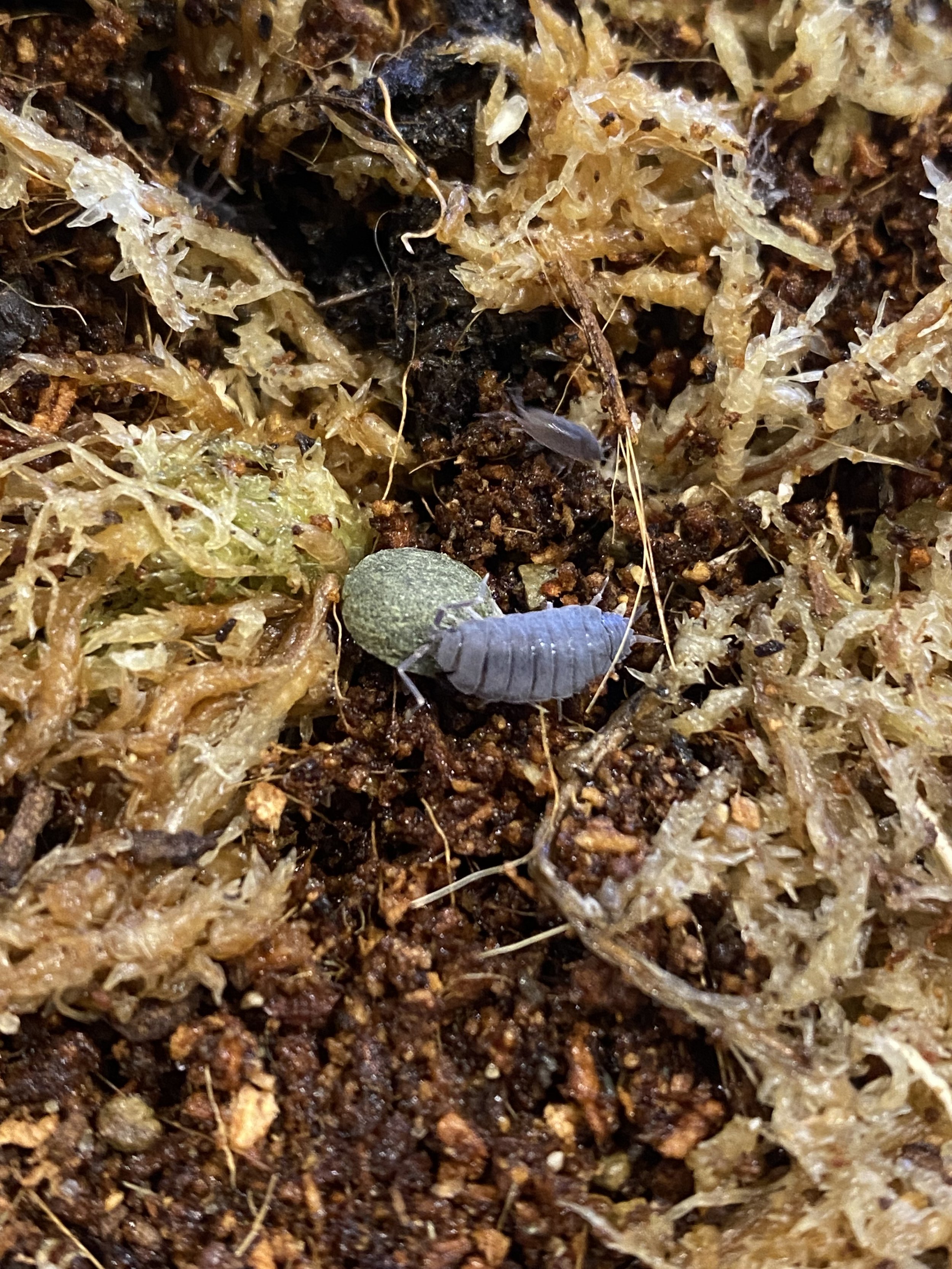 Image 1 of 3
Image 1 of 3

 Image 2 of 3
Image 2 of 3

 Image 3 of 3
Image 3 of 3




Australian Leaf Insect Eggs (Monteithi)
The Monteithi Leaf Insect (Phyllium monteithi) is a rare and beautifully camouflaged species found in Australia. Known for its leaf-like body and interesting habits, this insect is a master of disguise, blending seamlessly into branches and leaves to avoid predators.
Monteithi Stick Insects are docile, slow-moving, and fascinating to observe, making them an excellent pet for insect enthusiasts. They are easy to care for, thriving on a diet of Lilly PIlly {Syzygium smithii}. Their unique appearance make them a captivating addition to any collection.
Phyllium monteithi (Monteithi Leaf Insect) Egg Hatching Care Guide
Hatching Monteithi leaf insect eggs can be simple and rewarding with the right setup. Below are two tried-and-true methods: a container method and a bioactive setup using isopods for natural cleanup and moisture balance. Each pack incudes a minimum of 15 eggs.
✅ General Hatching Conditions
Temperature: 24–28°C (75–82°F)
Humidity: Moderate to high (60–80%)
Time to Hatch: 3–5 months (sometimes longer, be patient!)
Lighting: Normal day/night cycle – ambient room light is fine
Handling: Avoid touching or moving the eggs unnecessarily
Method 1: Simple Container Setup
What You’ll Need:
A small, ventilated container (cricket tub, food-safe container with air holes)
Paper towel or damp coco coir as a substrate
Fine mesh lid or pinholes for airflow
Light misting bottle
Instructions:
Line the bottom with damp (not wet) paper towel or coir.
Place the eggs on the surface, spaced apart.
Mist lightly 2–3 times a week to maintain humidity. Avoid over-wetting the substrate to prevent mould.
Keep the container in a warm room, away from direct sun or cold drafts.
Check daily for signs of mould or hatching nymphs.
Method 2: Bioactive Setup with Isopods
A naturalistic, low-maintenance option that closely mimics nature.
What You’ll Need:
Small terrarium or plastic tub with ventilation
Bioactive substrate mix (coco coir, leaf litter, sphagnum moss)
Leaf litter and bark for cover
Established colony of isopods (e.g. Powder Blues)
Springtails (optional but helpful)
Small food dish (placed away from eggs)
Instructions:
Set up a bioactive layer with substrate, leaf litter, and bark.
Introduce your isopods.
Place eggs on top of the substrate, lightly misted, spaced apart.
Important: Keep any isopod food (like veggies or protein sources) away from the eggs to prevent any risk of contamination or disturbance.
Mist the enclosure 2–3 times a week to maintain humidity and allow for drinking by emerging nymphs.
Once eggs hatch, the isopods will naturally clean up old egg cases and waste, reducing maintenance.
🔁 After Hatching
Newborn leaf insects (nymphs) should be moved to a rearing enclosure with plenty of food disregard this step if you have used the bioactive method.
They are fragile, so handle with care.
Make sure the enclosure is tall enough for moulting (minimum 3x their body length in height).
Using either method, patience is key! Leaf insect eggs can take several months to hatch, but with stable warmth, humidity, and minimal disturbance, you’ll have success in no time.
Care Tips:
🌡️ Temperature: 22-26°C (72-79°F) with moderate humidity
📏 Enclosure Size for adults: Minimum 30cm (H) x 30cm (W) x 30cm (D) to allow for molting
🥦 Diet: Lilly Pilly {Syzygium smithii}
💧 Humidity & Hydration: Light misting 1-3 times a day for moisture intake
Introduce a Monteithi Leaf Insect to your home and enjoy observing one of Australia’s most unique and camouflaged creatures in action!
This species is best kept with its own species only as others may mistake it for food and nibble on its body.
Please note this is just the eggs.

